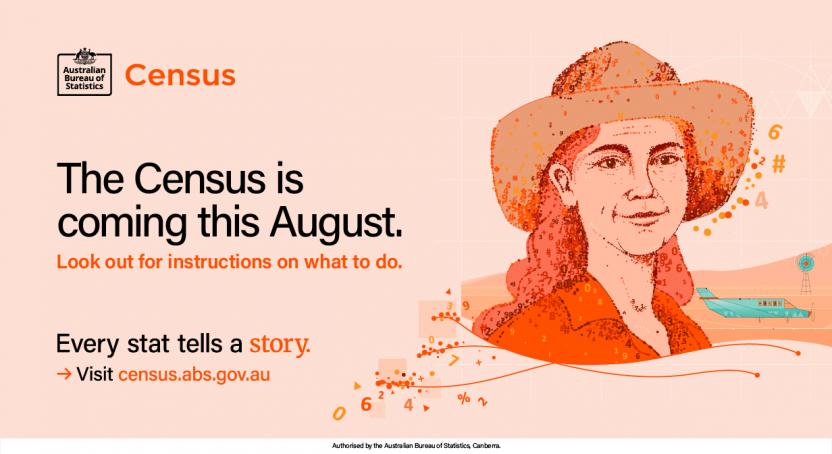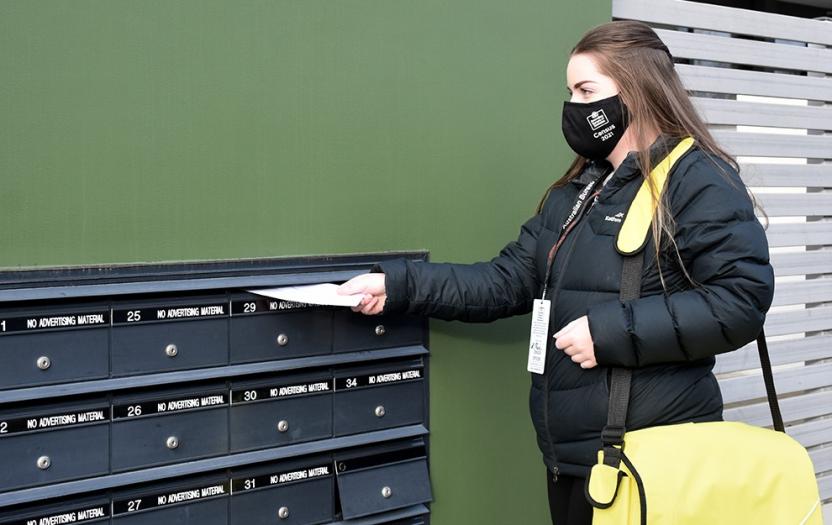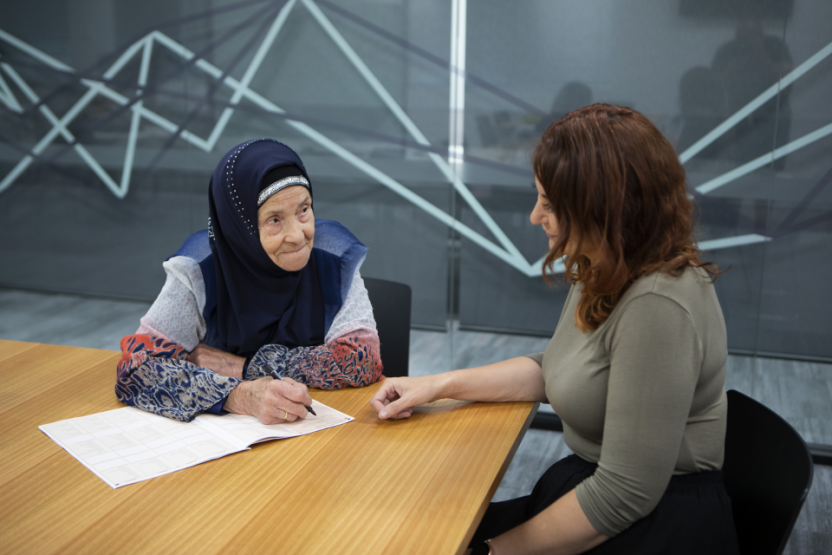Participation in the 2021 Census
Information on how the 2021 Census was conducted
How people completed
People were invited to participate from July to September 2021. Most households received instructions in the mail to complete online. Some households received a paper form. People living in remote areas and people experiencing homelessness had help from one of our Census staff.
More than 96 per cent of Australian dwellings completed the Census. This is an increase from 2016 Census and above our target.

Online form
The ABS kept people’s information safe, secure, and protected from cyber-attacks. Security and privacy were key factors in designing all elements of the 2021 Census particularly the Census Digital Service, which included the online form.
The ABS implemented state of the art cyber-security protections informed by the Australian Cyber Security Centre and other experts. All information collected in the Census was securely hosted in Australia and encrypted end-to-end.
Ahead of the 2021 Census, the Digital Transformation Agency confirmed the Census Digital Service was compliant with the Digital Service Standards for Australian Government services.
Advertising
A national advertising campaign ran on television, radio, print, outdoor channels like bus shelters and billboards, digital and social media to support the Census on Tuesday 10 August 2021. The campaign included translations for culturally and linguistically diverse communities and for Aboriginal and Torres Strait Islander people.
The campaign was based on the idea that the Census isn’t just numbers, but what those numbers tell us – every stat tells a story.
Through July 2021, advertising focused on the stories of how Census data is used by local communities and organisations.

From late July through mid-August 2021, advertising encouraged people to start their Census as soon as they got their instructions, if they knew where they would be on Tuesday 10 August 2021.

From mid-August to September 2021, advertising reminded people to complete their Census.

In October 2021, a thank you message went out to the millions of people who completed the 2021 Census.

Census questions
The 2021 Census contained new questions on long-term health conditions and service with the Australian Defence Force.
The changes allowed the Census to collect data on long-term health conditions, such as heart disease, arthritis and diabetes, to inform health policy and planning for community services.
Collecting information about service with the Australian Defence Force will provide a better understanding of the circumstances of Australia’s veteran community and support better provision of services for this group.
Some changes were made to existing questions to ensure continued relevance of the Census and improvement of the quality of the data. These include adding a non-binary option to the sex question and enhancing response options for the language and ancestry questions for Aboriginal and Torres Strait Islander people.
Window to complete
For the 2021 Census, households had several days to complete rather than a single night. Households were encouraged to start the Census as soon as they received instructions if they knew where they would be on Tuesday 10 August.
Census staff
We recruited Census staff in cities, towns and regional areas across all states and territories to help deliver the 2021 Census.
Census staff were a crucial workforce that helped people throughout Australia to participate by:
- delivering Census instructions and forms and visiting households that had not responded
- promoting Census participation and answering peoples’ questions
- helping members of the public who needed special support to complete the Census.
COVID-19
The 2021 Census was undertaken during a period when a number of areas were under lockdown restrictions.
The health and safety of the community and our staff is our highest priority. We actively adapted our approach to suit local circumstances including lockdowns.
This included provision of alternative online and telephone support, mail-out of additional forms and extending the period during which we provided support for communities in some areas.
People under COVID-19 lockdown restrictions were still required to complete the Census. The ABS provided advice on how to respond to questions related to study and work impacted by the change of circumstances.
For more info see COVID-19 and the Census.
The majority of COVID-19 insights from the 2021 Census data will be available from October 2022.

Accessibility
We wanted to make sure as many people as possible could complete their Census form themselves. We also provided a range of help and support options to assist people to complete their form.
We provided information about the Census in different ways, including easy-to-read accessible formats.
The Census website and online form were created to ensure they were accessible for as many people as possible. Our website was designed to work with screen readers, keyboard navigation and a range of assistive technologies. The Census form also filtered questions so that only items relevant were shown.
The Census website and online Census form met the WCAG 2.0 Level AA online accessibility standards. We included options for people to be able to log in and complete their form even if they could not use the letter we sent – you could get a Census number and complete your form when you were ready.
We provided resources for people in the deaf/hard of hearing and blind/low vision communities, including:
- forms, help guides and information available in Braille (grade 1 and 2) and large print
- additional customer service channels for ordering Braille and large print forms including a 24-hour telephone line
- option to complete the Census over the phone
- audio help guides
- videos in Australian Sign Language (Auslan) and video guides with closed captions and transcripts
- help via the National Relay Service.
The 2021 Census website won the 'Government Website of the Year' at the Australian Access Awards organised by the Centre for Accessibility.
In-language assistance
We provided a range of supports and resources to help migrants, refugees, and international visitors to complete the Census, including:
- hiring Census staff who speak additional languages and reflect the diversity of local communities
- fill-in-the-form sessions around the country to provide face-to-face support to complete the Census
- in-language video guides to support communities within lockdown areas
- supporting organisations across Australia, such as Migrant Resource Centres and community information hubs, to help community members understand and complete the Census
- offering Census lesson guides and worksheets to organisations around the country that teach English to migrants
- encouraging people to call the Translating and Interpreting Service (TIS National) for in-language support
- translated resources on our website in 40 languages, and advertising in 29 languages.

Aboriginal and Torres Strait Islander communities
In urban and regional areas, pop-up hubs, information sessions and fill-in-the-form sessions were run to provide face-to-face support. These were places where people could get a paper form, pop in to chat about the Census, and get information and support.
In remote areas, the Census is conducted over an extended period. This is so remote teams can cover vast areas and visit multiple communities.
For people living in remote communities, Census staff helped people to complete the Census through face-to-face interviews or over the phone in some areas.
National radio advertising for the Census was translated into 19 Indigenous languages to support awareness in Aboriginal and Torres Strait Islander communities.

Census and people experiencing homelessness
We worked with people in the homelessness sector to make sure we could count everyone in the 2021 Census.
Our Census staff visited areas over a week-long period where people were known to sleep rough. They interviewed and recorded people’s responses on a shortened version of the Census form.
In areas where this was not possible due to COVID-19, we worked with service providers to identify the best option to ensure people experiencing homelessness were counted in the Census.